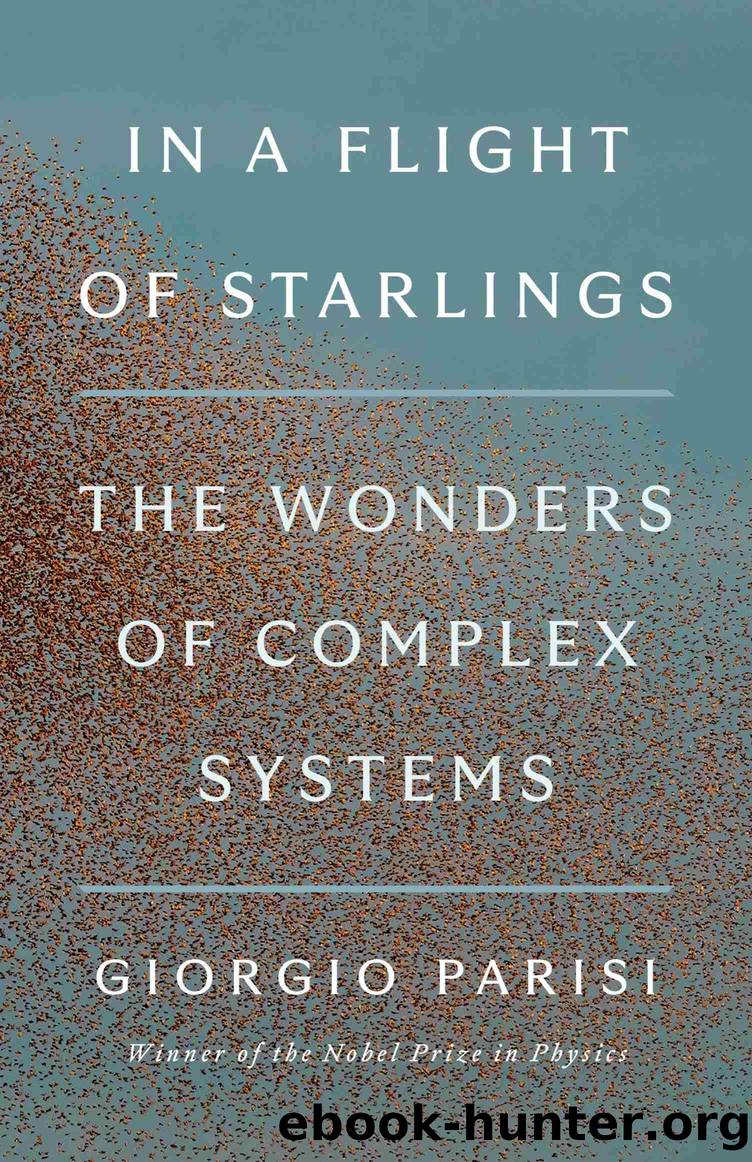In a Flight of Starlings by Giorgio Parisi

Author:Giorgio Parisi [Parisi, Giorgio]
Language: eng
Format: epub
Publisher: Penguin Publishing Group
Published: 2023-07-11T00:00:00+00:00
* * *
⢠⢠â¢
Before getting to the physics, letâs try to understand the modification that was needed from a mathematical point of view.
To make the replica method work, I had to âextendâ it. The possibility of extending a mathematical method is based on a very old idea. The French bishop, mathematician, physicist, and economist Nicola dâOresme was probably the first to use it, in the mid-fourteenth century. DâOresme was an incredible figure, and provides conclusive proof, if proof were needed, that the medieval period was not the dark age for science that our school textbooks might have us believe. To choose just one of many examples, he was the author of a book on how the positions of stars are distorted by atmospheric refraction, written around 1360. Since it is in Latin, I cannot claim to have read it through. It is nevertheless obvious that his reasoning was remarkably sound from a conceptual point of view. He probably got the idea while observing the sun âcrushingâ the horizon at sunset, suggesting that there must be a distortion. Calculating the degree of distortion is vital if we are to make precise astronomical observations, as the apparent measurement of the stars needs to be corrected by as much as two or three degrees.
Returning to our problem, dâOresme was the first to realize that raising a number by ½ was equivalent to finding its square root. This seems now like a banal enough truth, of the kind that we all learn in high schoolâbut this fails to recognize the logical leap that dâOresme made by extending the properties of powers to fractional numbers. These were properties that had been reserved exclusively for integers.
The idea of raising a number to a power is very simple. Squaring a number, or raising it to the power of two, means multiplying the number by itself. Cubing a number, or raising it to the power of three, means multiplying the number by itself, then by itself again. And so on. To raise to the power of ½ seems absurd: What does âmultiplying a number half timesâ mean? DâOresmeâs idea was to extend a property of exponentiation: that exponents must be multiplied when raising to a power a number that has been raised to a power. For example, 22 raised to the power of 3 is equivalent to 26 (i.e., 64, or 43).
If squaring a number raised to the power of ½ results in the number with which we began (since 2 times ½ is 1), then raising to the power of ½ is equivalent to extracting the square root: the square root of a number squared is that number itself.
These properties are formally derived, since multiplying a number half times makes no sense; the formal properties, however, guarantee a coherent result. Nicola dâOresme went beyond the original point of view, beyond immediate understanding, but by maintaining the formal properties, he obtained a very simple method for solving even complex operations. After dâOresme, mathematics often advanced by extending properties in a formally correct way in new conditions, broadening their scope.
Download
This site does not store any files on its server. We only index and link to content provided by other sites. Please contact the content providers to delete copyright contents if any and email us, we'll remove relevant links or contents immediately.
The Complete Stick Figure Physics Tutorials by Allen Sarah(6650)
Secrets of Antigravity Propulsion: Tesla, UFOs, and Classified Aerospace Technology by Ph.D. Paul A. Laviolette(3591)
Thing Explainer by Randall Munroe(3337)
The River of Consciousness by Oliver Sacks(2999)
The Order of Time by Carlo Rovelli(2737)
I Live in the Future & Here's How It Works by Nick Bilton(2534)
How To by Randall Munroe(2499)
A Brief History of Time by Stephen Hawking(2483)
The Great Unknown by Marcus du Sautoy(2195)
What If?: Serious Scientific Answers to Absurd Hypothetical Questions by Randall Munroe(2179)
Blockchain: Ultimate Step By Step Guide To Understanding Blockchain Technology, Bitcoin Creation, and the future of Money (Novice to Expert) by Keizer Söze(2144)
Midnight in Chernobyl by Adam Higginbotham(2084)
Networks: An Introduction by Newman Mark(2003)
The Meaning of it All by Richard Feynman(1915)
Easy Electronics by Charles Platt(1871)
The Tao of Physics by Fritjof Capra(1861)
When by Daniel H Pink(1781)
Midnight in Chernobyl: The Untold Story of the World's Greatest Nuclear Disaster by Adam Higginbotham(1777)
Introducing Relativity by Bruce Bassett(1758)
